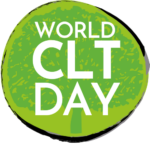Fee Simple Ownership
Fee simple ownership allows a CLT to hold the greatest number of “sticks” in the bundle of ownership rights and provides a high level of land security, as long as all mortgage payments and tax obligations are met. In urban areas, agriculture sites are often located on vacant lots, where ownership responsibilities may be contested and long-term security can be uncertain. In such circumstances, fee simple ownership is often considered the most durable way to insulate land from the speculative forces of real estate markets and secure property for community use.
Some CLTs choose to focus on acquiring land through fee simple ownership but decide not to develop in-house agricultural expertise for programmatic support or direct agricultural production. For example, in the early 1990s, the Durham Community Land Trustees in Durham, North Carolina purchased a property that included a small, non-conforming lot that the local neighborhood association advocated to become a community garden. Today, the Durham CLT continues to hold title to the community garden site, but the neighborhood association manages all programmatic and growing responsibilities, including paying utility fees.
A similar arrangement is seen at the Dudley Greenhouse in Roxbury, MA. Guided by community input, Dudley Neighbors, Incorporated (DNI) redeveloped the contaminated site of a former auto garage into a 10,000 square foot greenhouse that functions both as a commercial farm and a community growing space. DNI secured the land through fee simple ownership and leases the greenhouse for a nominal amount to a food-based nonprofit that handles agricultural programming and maintenance of the greenhouse structure. Harry Smith, Director of Sustainability and Economic Development at DNI, noted the benefits of this arrangement, “Growing food is a whole different thing, and we are not looking to take that role. This goes along with our belief that we should do the things we are good at, and do them well. And we shouldn’t do the things we are not good at.”
Urban agriculture sites can be expensive to acquire and hold in fee simple ownership. Some CLTs have reduced their costs by integrating urban agriculture into larger development projects. The Madison Area Community Land Trust utilized this strategy at the Troy Gardens project in Madison, Wisconsin. Troy Gardens incorporates diverse land uses on its 31-acre site. Five acres contain mixed-income cohousing, while 26 acres are set aside for a community garden, community-supported agriculture farm, and conservation areas. The Madison Area CLT structured the project so that the entire site (including the agricultural land) was eligible for federal HUD subsidy funding.5 Thus, by combining housing, agriculture and conservation goals, the Madison Area CLT was able to purchase a large tract of land in an expensive urban market and secure over 75% of the land for agricultural and conservation purposes.
Church Community Housing Corporation (CCHC) utilized a similar approach in developing Sandywoods Farms in Tiverton, Rhode Island. In 2004, the owner of a 174-acre low-intensity farm approached the Town of Tiverton with the vision of developing the site into a rural arts community. The town brought the project to CCHC, who agreed to develop the site to achieve the town’s comprehensive planning goals of preserving open space, maintaining rural character, creating affordable housing, and supporting the local arts community. Brigid Ryan, Senior Project Manager at CCHC noted, “We didn’t want to only do housing if housing is not [the] best use for the community in this location. So we took a broader view and said this is an opportunity. This is a huge parcel of land; what can we do with it?” Sandywoods Farms utilizes a clustered development approach, with 24 market-rate homeownership lots, along with 50 units of affordable homeownership and rental housing on 26 acres. Another 97 acres were transferred to a conservation land trust for ecological conservation. The remaining acreage went towards preserving farmland and creating a community garden, orchard, art galleries, and a commercial kitchen.
The Sawmill Community Land Trust in Albuquerque, New Mexico illustrates another example of an integrated development approach. In 1999, the Sawmill CLT won a development bid from the city of Albuquerque to plan and redevelop a 27-acre site, which includes affordable housing, economic development, and a forthcoming community garden. The Sawmill CLT’s ability to secure urban agriculture land through fee simple ownership was strengthened by government support for the comprehensive development project. In this case, the city has retained ownership of the future community garden parcel until the CLT is ready to develop.
While a CLT can use fee simple ownership to secure access to land, the continued use of the land for agricultural purposes is not guaranteed. Presuming that external restrictions on the use of the land are not imposed, a CLT can change the programming of fee simple land from urban agriculture to other uses, such as housing. In such situations, the CLT’s process for community- based decision-making is critical. Even where land is restricted to agricultural uses, such as through deed restrictions, secure tenure for the growers is not assured. The individual grower’s right to farm a plot year after year is not ensured through the CLT’s fee simple ownership of the land but depends on the informal and contractual relations between the CLT and the grower. Nevertheless, fee simple ownership can be an effective tenure arrangement for CLTs to secure land, but this arrangement may be impractical given the acquisition costs of urban land and the holding costs (depending on local property taxation). For these reasons, alternative tenure arrangements have also been used by CLTs seeking to secure land.

